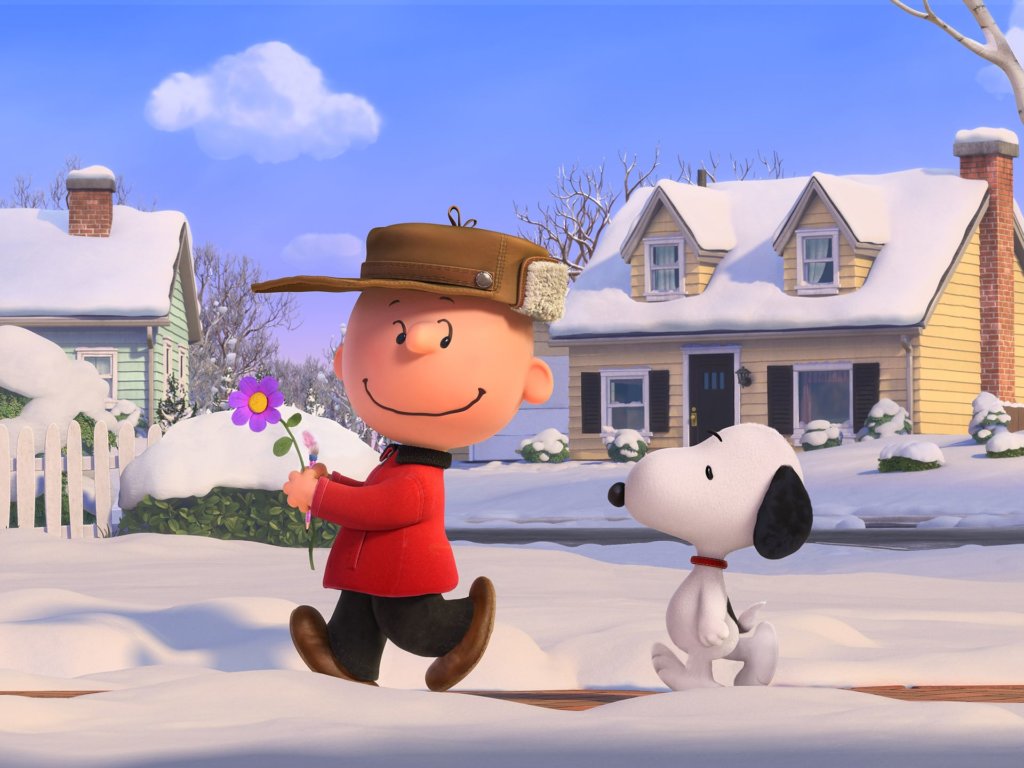Our favorite cartoons from childhood are being remade using CGI to attract a new generation of viewers. Are we right to cry "Good Grief!!"—or are we merely being nostalgic?
This article was made possible because of the generous support of DAME members. We urgently need your help to keep publishing. Will you contribute just $5 a month to support our journalism?
The music, at least, is unchanged: At the very start, you hear the familiar strains of Vince Guaraldi’s “Linus and Lucy,” a melody that launched itself directly your brain’s nostalgia center. If you were a child during the 1970s or ’80s, it’s nearly impossible to hear those opening notes without catching a whiff of rec-room shag. (I myself am swamped by a sense memory of wearing hand-me-down Sears Toughskins.)
And then, where you might expect to see the charming hand-drawn images of Charlie Brown and Snoopy, Lucy, Linus, and the rest, you see instead a soulless, charmless CGI rendering of Charlie Brown’s head, his trademark curl (a gesture toward hair on an otherwise bare pate—meant to suggest a kind of wan pale blondness, Charles M. Schulz always said) alive and springy, like a 3-D worm.
{C}{C}{C}{C}{C}
Welcome to Peanuts, the new Charlie Brown movie. Now say good-bye to your childhood.
I know it’s not fair to judge a film by its trailer, but judging from the YouTube comments, I’m not the only one who hates what I’ve seen so far of this new film version. It’s not just because the movie’s aesthetic looks as bland and featureless as a Botoxed balloon, when the older Charlie Brown specials were so quirky and perfect and warm.
Nor is it only because I hate change.
But there’s something about this trailer that makes me feel as if someone had snuck into my house and replaced my threadbare, beloved teddy bear with Teddy Ruxpin, or swapped out my real little boy for a mannequin. And it’s not just the new Peanuts movie—it feels as if Hollywood would rather recycle, revamp, and remix all our childhood cultural touchstones. We’ve been tortured by a new Grinch, a replacement Cat in the Hat, an ersatz Willie Wonka.
It feels unfair. Why are there still entire radio stations devoted to the favorite music of baby boomers, while it’s open season on Gen-X memories. (Another reason we are sick of your bullshit, I suppose.)
It all makes me wonder about my own kids and how their pop culture will fare over time. For one thing, how much of it will be recycled from previous generations? Maybe it’s just human nature to retell stories, retooling the characters and images to attract a new generation. And yet I wonder how much original work is starved of oxygen because of the attention and money paid to the remixes.
The retooled versions are mostly awful. (Not all of them, of course: My daughter adores the Lindsay Lohan version of The Parent Trap, and it’s a fondness I share and endorse—not to mention LiLo’s first and best role!) But most of them suffer from the same dumbing-down, designed-by-committee, focus-grouped approach I sense in the new Peanuts trailer.
My friend Chris writes, “When I was 7 or 8, I LOVED Land of the Lost. The Sleestaks were terrifying, the Pylons were mysterious, the plots often took surprisingly mystical turns. They remade the series about 20 years later and it was totally bowdlerized. The Sleestaks were transformed into almost cuddly Muppet monsters, and all the sense of mystery was completely drained from the stories.”
Aren, a veteran preschool teacher, pointed to the devolution of Winnie-the-Pooh. The first few, she said, “were really based on the book.” These, from the 1960s, “were and remain funny, clever and show the book pages, with type, making it clear that they are taken from a beautiful book. The later ones all have an educational point—learning the alphabet, friendship, etc.—they’re pretty bad, overly cartoonish without the wonderful language and feeling of A.A. Milne.”
Even Sesame Street can feel like “a shell of its former self,” another friend, Jenn, complained. “Too cutesy, too catch-phrasey … the older stuff seemed to genuinely appeal to kids and adults at once. Now, the Sesame Street parodies and celeb cameos seem not at all kid-driven, but rather designed to go viral for their parents.”
Perhaps for that reason, a lot of us cringe when we hear about a new movie or show that’s based on an older one, or on a previously un-adapted book. My personal nightmare would be a feel-good version of Island of the Blue Dolphins (probably starring Ariana Grande—don’t get any ideas, Disney!)
I’m aware there’s a dangerous side to this kind of rigid nostalgia. I don’t want to end up like one of those boomers, always proclaiming the excellence of the music and movies I loved when I was young. Nor am I saying that I grew up during some kind of Golden Age of Childhood (hello, TV dinners, rampant divorce, and Three’s Company). But I do want my kids to experience some of the things that mattered in my own childhood—it’s why half of the books on their shelves used to be mine—as well as explore and discover the best of what’s new.
Life is too short, in short, to waste on bad art. On the other hand, childhood is the ultimate changing same. So much of it is universal, from conflicts with parents and siblings to curiosity and fears about growing up—but so much, too, depends upon context. Those of us who grew up with an animated Grinch voiced by Boris Karloff belong to a different tribe than those whose Grinch is Jim Carrey in a prosthetic face. Our response to art and entertainment is individual, but it is also generational.
What are the childhood favorites you think were ruined by remakes? Please share yours in the comments.
